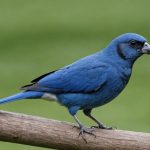Understanding the Unique Anatomy of Newfoundland’s Webbed Paws
Newfoundland dogs possess a fascinating anatomical feature: webbed paws. These paws are not just a quirky characteristic, but an essential adaptation allowing them to excel at swimming. The webbing between their toes provides increased surface area, which aids propulsion in water, much like a pair of natural flippers. This makes Newfoundland dogs exceptional swimmers, originally bred for water rescue and retrieval tasks.
The unique structure of a Newfoundland’s paws is not just about webbing; it’s also about their size and strength. Large, robust paws provide support and stability on various terrains, whether wet or dry. These characteristics play a crucial role in the dog’s mobility and balance.
Also read : The complete handbook for tracking fitness activities for your lively australian cattle dog
Proper grooming and care of these webbed paws are vital for maintaining their health. Regularly checking for debris and trimming excess fur helps prevent matting, which can lead to discomfort or mobility issues. Moist environments might also bring fungal infections, making routine paw cleaning important. Applying balms can protect the paw pads, especially in harsh weather conditions.
By prioritising paw care, owners can ensure their Newfoundland enjoys optimal health, ready to tackle water adventures and daily walks with enthusiasm.
Also to discover : Essential techniques for successfully socializing your tibetan terrier in vibrant urban settings
Step-by-Step Grooming Techniques
When grooming techniques for Newfoundland dogs, particular attention must be paid to their distinctive features, like their webbed paws. A structured approach helps ensure both safety and comfort for your pet.
Preparation: Gathering Necessary Tools
Ensuring you have the appropriate grooming tools is crucial. For Newfoundland paws, essential tools might include a pair of high-quality scissors, a slicker brush, and a comb specifically designed for thicker fur. It’s equally important to maintain the hygiene of these tools. Regular cleaning of grooming equipment prevents potential infections or irritations. Creating a calm grooming environment is beneficial for your Newfoundland. Playing soothing music or offering treats can significantly help ease your dog’s anxiety during grooming.
Cleaning the Paws
Proper cleaning of Newfoundland dogs’ webbed paws requires some specific methods. Using gentle, pet-safe cleansers is recommended to safeguard their sensitive skin. The frequency of cleaning often depends on their activity levels, with those spending more time outdoors necessitating more regular washes to remove debris and residue.
Trimming Fur Around the Paws
Knowing when and how to trim the fur around a Newfoundland dog’s paws is vital. Overgrown fur can collect dirt or obscure any health issues. Seasonal changes might affect trimming needs, requiring adjustments in colder months to allow for extra insulation.
Hygiene Tips to Prevent Infections
Caring for your Newfoundland dog requires a focus on infection prevention to ensure they stay healthy and happy. A daily hygiene routine is vital, especially due to their unique physical traits like webbed paws. These webbed paws help them swim but can also trap moisture and dirt, which could lead to infections if not properly maintained.
To maintain proper hygiene, it’s crucial to regularly inspect and clean their paws. After a swim or a walk through wet areas, thoroughly drying the paws is essential. This simple action helps prevent fungal and bacterial infections which thrive in damp conditions.
Utilizing pet-safe wipes and sprays provides a quick and effective method for cleaning between the toes and around the paw pads, further aiding in infection prevention. These products are designed to be gentle yet effective, ensuring the health of your Newfoundland dog while making the cleaning process easy for you.
Incorporating these practices into your daily routine will ensure that your Newfoundland dog remains free of infections and lives a healthy life. Remember, consistent care is key to a happy, healthy pet.
Signs of Infection and Common Issues
When it comes to paw health, recognising the signs of infection is crucial for preventing further complications. You should monitor symptoms like redness and swelling. These are key infection signs that should alert you to possible paw issues.
Recognizing Signs of Paw Infections
Understanding when a paw infection needs medical attention is essential. Noticing signs such as persistent redness or swelling could indicate an infection requiring veterinary care. Prompt attention to these symptoms can make all the difference, as infections can worsen quickly. Differentiating between minor issues, like temporary paw irritation, and serious concerns such as deep wounds or severe inflammation, is important. Serious infections often involve discharge or a foul smell, signifying a need for immediate intervention.
Common Issues with Webbed Paws
Newfoundland dogs are often susceptible to common paw conditions like interdigital cysts. These cysts can be uncomfortable and require proper care to prevent infection. Factors contributing to paw problems include their active nature and wet environment exposure, which often exacerbate conditions like these. Understanding how lifestyle impacts Newfoundland dogs’ paw health plays a vital role in prevention. Routine checks and maintaining clean, dry paws can mitigate these common issues, ensuring your furry friend stays healthy and happy.
Preventive Care Measures
Preventive care is crucial for the health and well-being of Newfoundland dogs. Regular veterinary check-ups are fundamental in identifying potential issues early and ensuring your dog’s overall health is monitored consistently. These visits should include routine vaccinations, dental checks, and discussions on diet adjustments to maintain optimal health.
A balanced diet is essential, particularly for the skin and paw health of Newfoundland dogs. Ensuring their diet is rich in omega fatty acids can significantly improve and maintain their coat’s lustre and skin health. Proper nutrition not only aids in preventing skin irritations but also fortifies their immune system, making them less susceptible to infections.
Grooming best practices play a pivotal role in preventive care. Newfoundland dogs require regular grooming to avoid matting and skin problems. Brushing several times a week is recommended to keep their dense coat manageable and free from dirt.
Moreover, educating pet owners about seasonal care needs is vital. Seasonal changes often bring specific challenges; for instance, increased shedding during spring and autumn or paw care during winter. Understanding these needs helps in preemptively addressing potential health issues, ensuring a healthier life for your Newfoundland dog. Being informed and proactive makes a significant difference in the preventive care strategy.
Expert Advice and Resources
Caring for a Newfoundland is no small feat, requiring a blend of expert tips and trusted grooming resources. Thankfully, insights from veterinarians and professional groomers can provide vital guidance. These experts emphasize a regular grooming schedule as essential, not just for aesthetics but health and comfort as well.
When it comes to grooming resources, myriad options are available. Books, online tutorials, and workshops can be incredibly useful. James Herriot’s classic “All Creatures Great and Small” offers timeless advice, while platforms like YouTube provide visual techniques on trimming and bathing. If you’re more research-oriented, subscribing to pet care journals can offer fresh insights on Newfoundland care.
Local organizations and groups can serve as a support system, especially for those new to Newfoundland ownership. Check out regional dog clubs or Facebook groups dedicated to Newfoundland enthusiasts, which can be treasure troves of peer support and advice. These communities often organise meet-ups, which are excellent opportunities for gaining hands-on experience in grooming and care.
In summary, leveraging expert tips, tapping into varied grooming resources, and connecting with local Newfoundland care networks will set you up for success. This multi-faceted approach ensures not only a well-groomed Newfoundland but a happy, healthy one too.












